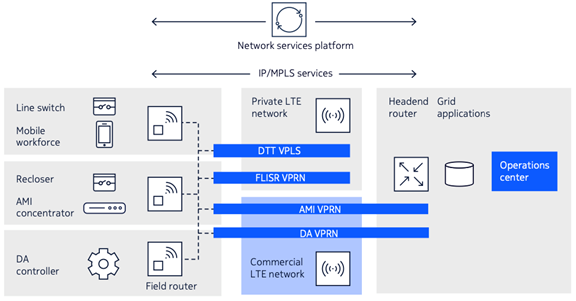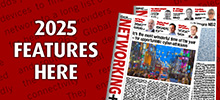15 September 2023
Dominique Verhulst, Head of Utilities Vertical, Nokia
Given the nature of renewables, however, the grid will be challenged to manage these distributed energy resources without better communications between substations, feeder circuits and IEDs. To bring their grids up to speed and make them more intelligent, DSOs will need to rely heavily on field area networks that converge optical fibre and private wireless networks to connect the management systems that will monitor, control, and protect the grid.
Data-driven grids
In many countries in the world today, plugging any kind of distributed energy resource into the grid without conforming to the local utility’s regulations would be unwise. Electrical supply must conform to specific parameters such as voltage and frequency, otherwise electrically sensitive equipment can be damaged. In a traditional one-way grid most of the load balancing and power conditioning is handled upstream. Adding distributed energy resources at the downstream end can cause issues.
A specific example of the general problem is something called DER islanding. Picture a traditional substation providing power to a neighborhood feeder circuit (Figure 1), but now with a rooftop solar array attached at the downstream end of the circuit. Due to a fault incident on the line closest to the substation (Section 11), a circuit breaker (CB1) and recloser (R1) are tripped, isolating the fault. All good, except that if, for instance, the solar array inverter is not functioning, it would still be feeding power through the PCC into the part of the feeder circuit downstream from the recloser. Unless prepared against it, this is both a hazard for the line crews sent to address the fault, as well as the local electrical equipment on that section of the feeder, which can be subject to out-of-range voltage and frequency.

Figure 1. An islanded feeder circuit being energized by a DER
An islanding protection scheme (anti-islanding) employs a direct transfer trip (DTT), which is a communication-based application. When it detects the fault, it communicates directly with the relevant switch (Line Switch S1) to isolate the DER. To protect the equipment, this must happen in the range of 5–50ms of the fault occurring.

Figure 2. A converged FAN architecture supporting DTT and DA
In terms of communications, this can be achieved with a traditional wired circuit, but it is expensive to wire all the IEDs in the grid for this kind of function. A less expensive but equally robust alternative can be provided by the utility’s private LTE network (which can be backed up in remote regions, for instance, by a network slice on a public LTE or 5G network). Besides DTT functions, a private wireless network can handle general distribution automation (DA) including fault location, isolation and service restoration (FLISR) and advanced metering infrastructure (AMI).
Grid resilience and climate change
With the electrification of our industrial, transportation, public and residential infrastructure, the robustness of the grid becomes mission critical. Service interruptions will be highly disruptive as alternate sources of fossil fuel energy may no longer be readily available to run generators, power home heating or fuel food delivery and emergency services. To make matters worse, climate change is likely to produce more high winds, flooding, and fires, all posing threats to continued grid operation.
Advanced distribution management systems (ADMS) are being installed worldwide to improve the resiliency and reliability of distribution systems. Fault location, isolation and service restoration (FLISR) is a critical application in ADMSs. According to a U.S. Department of Energy study, FLISR can reduce the number of customers interrupted (CI) by 55% and customer minutes of interruption (CMI) by 53%.
For traditional FLISR applications to work, reliable but not necessarily bandwidth-intensive communications are essential. A line sensor, such as a SCADA terminal unit or an AMI, sends a message to the FLISR controller to indicate a service interruption. Together with the distribution and outage management systems, the fault is located, and line switches or circuit breakers isolate the section. Where the distribution topology allows, power is re-routed around the fault to downstream users connecting them to a different substation. This limits the outage causing fault to only those users on the isolated sub-circuit.
With the addition of DERs, this simple scenario becomes more complicated. The DERS can also contribute to faults meaning multiple sources to isolate, which is more than older FLISR systems can manage. This is where an ADMS is essential. The key is to make it aware of the exact configuration of DERs and model the more complex system in the ADMS software so that it can correctly optimise the restoration solution. Centralised ADMS FLISR applications require significant bandwidth to handle two-way communications with all the affected devices, collecting data and sending instructions once the fault(s) have been located and the appropriate actions determined. A converged FAN and LTE can meet this need.
Renewable energy provided by DERs will be one of the important ways utilities address the need for carbon-neutral energy generation. But they impose new issues for distribution management, problems that can be solved with the help of converged FANs that bring together the best of IP/MPLS, optical fibre and private LTE networks.










